Submitted by WA Contents
Honglin Li's floating skyscraper converts waste into energy in the Great Pacific Garbage Patch
United States Architecture News - Aug 05, 2019 - 02:01 14424 views
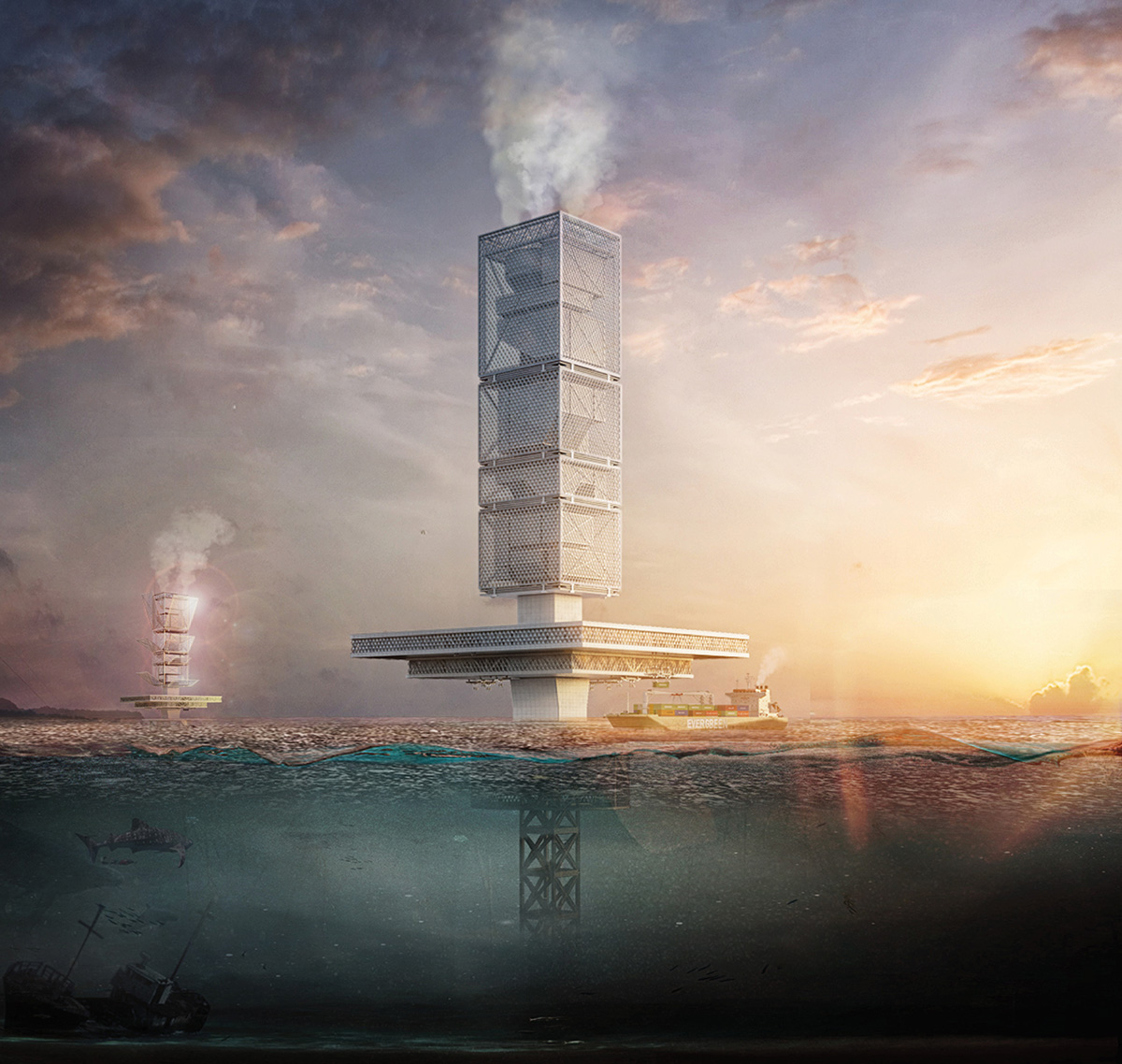
US-based architect Honglin Li designed a floating skyscraper converting garbage into waste to help resolve the world energy crisis for this coming century. Named Filtration, Li's proposal won the Honorable Mention in the 2019 eVolo Skyscraper Competition.
Conceived to be built in the Great Pacific Garbage Patch, the skyscraper is proposed as a waste-management and waste-to-energy power plant skyscraper in the Great Pacific Garbage Patch, which is a collection of marine debris in the North Pacific Ocean.
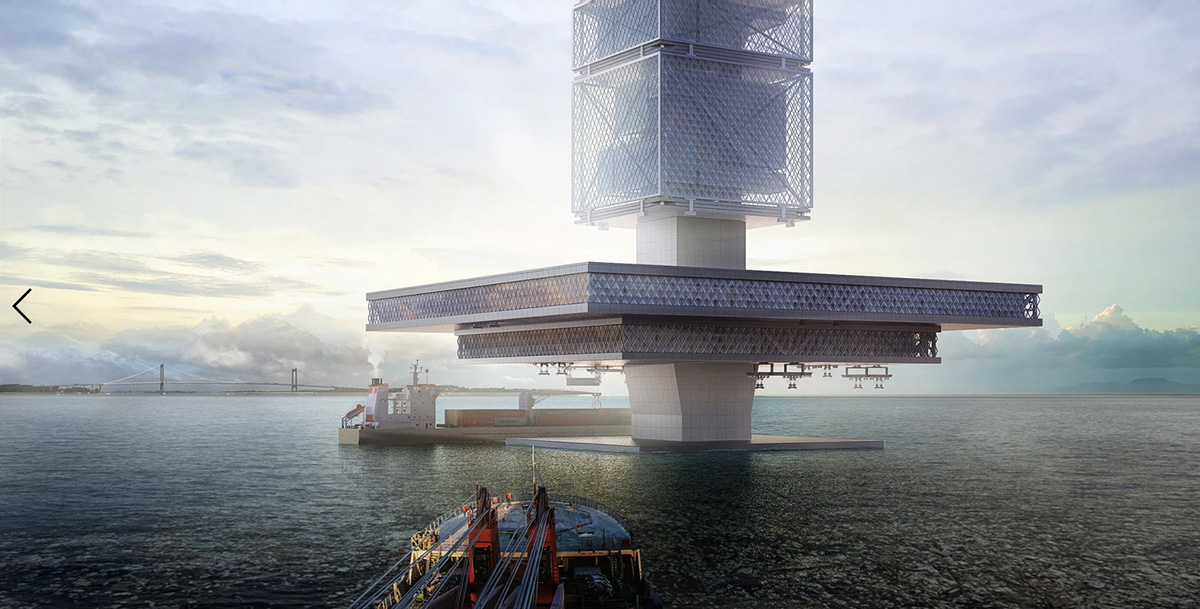
The Great Pacific Garbage Patch spans waters from the West Coast of North America to Japan. "The size of the patch is estimated to be 8.1% of the size of the Pacific Ocean, twice the size of Texas, thrice the size of California, the rubbish layer is on average 100 feet thick," said Honglin Li.
"The Great Pacific Garbage Patch is not the only vortex—it’s just the biggest. The Atlantic and Indian Oceans both have trash vortexes. Even shipping routes in smaller bodies of water, such as the North Sea, are developing garbage patches."
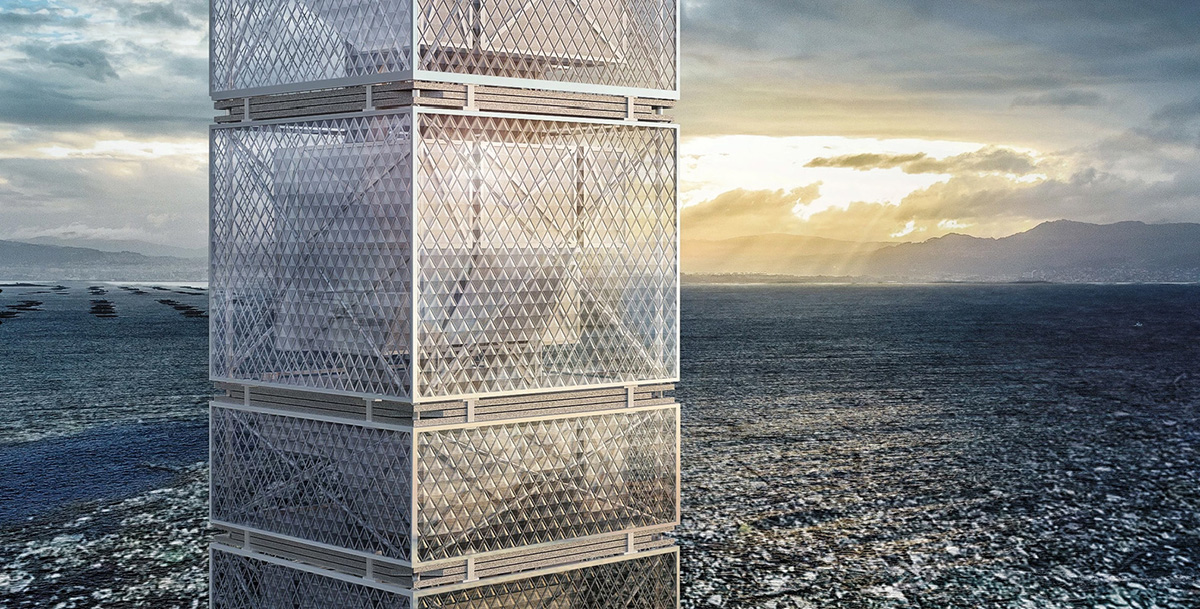
The skyscraper is designed as a highly modularized prefabricated waste-management and waste-to-energy power plant megastructure that contains several Material Recovery Facilities (MRF) and Water Treatment Plants (WTP) to recycle the floating garbage continent and clean the seawater in all levels from the different ocean across the world.
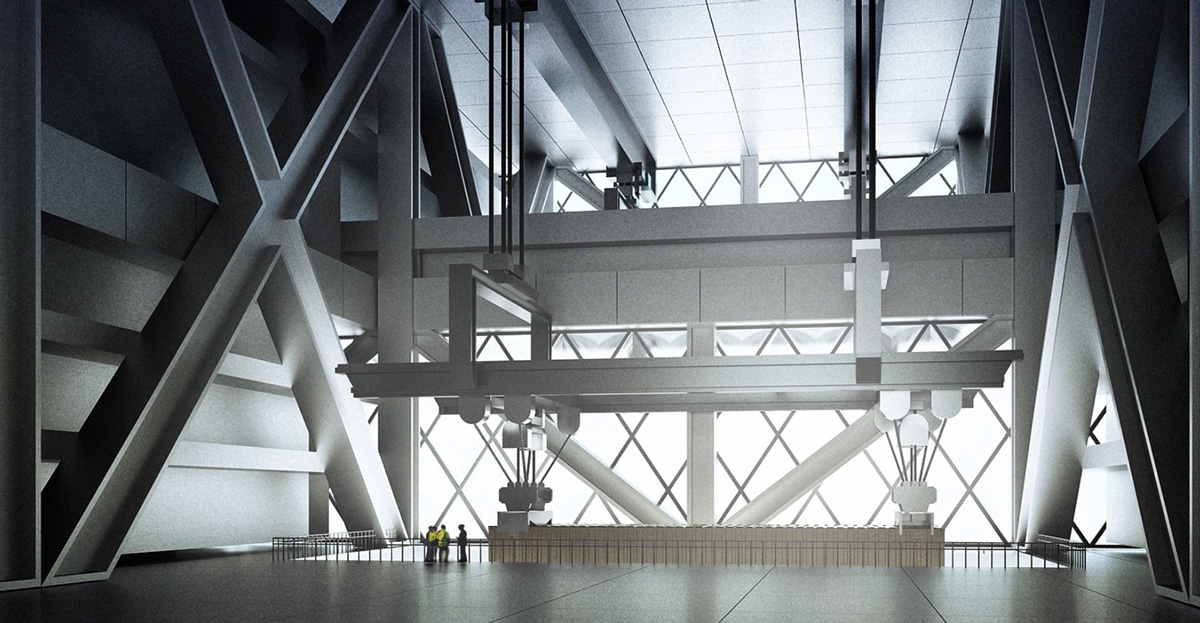
Conceived as an innovative structure, it is not only for self-sustaining but also helping resolve the world energy crisis for this coming century.
Unlike the conventional material recovery facility mainly relies on gravity, by using multiple conveyors to rise the garbage mainstream several times to sort different items.

The skyscraper uses seawater to pump the garbage with polluted water together to the highest location of the building and filter the water and recycle the material for the top to bottom of the building. Eventually, the non-recycled material and recycled material will be transported away.

The main structure – the "tree truck" core can allow for a flexible and inclusive range of facilities and plants attach to it.
"Anything from Plastic Recycling Facility to Waste-to-energy Power Plant can be accommodated in a vertical aggregation on four sides of idealized and efficient dwellings at the foundations of the tower," said the architect.
"Most of the facility is composed of modular parts which can be replaced as the requirements."
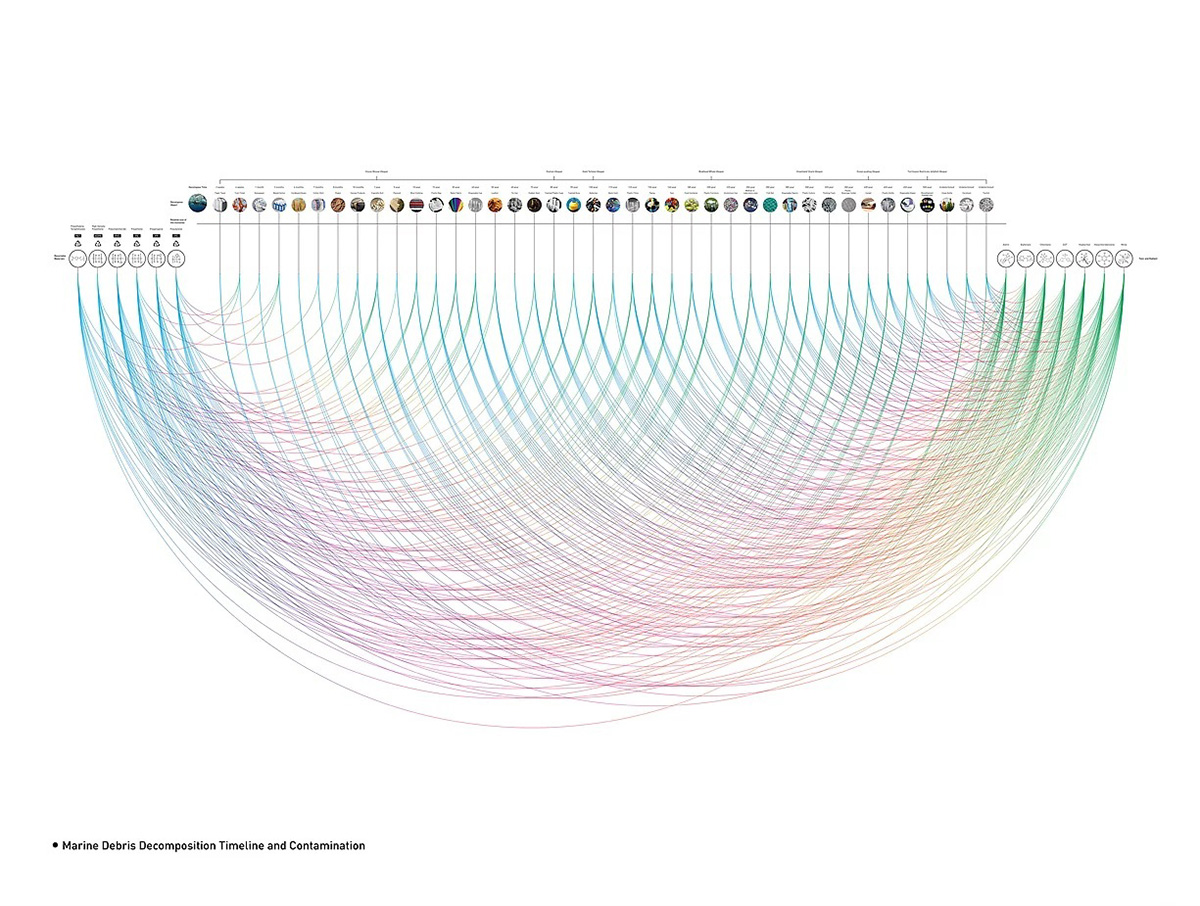
This proposal not only gives a rebirth to floating waste but also give the second chance to reconstruct the relationship between nature and human beings.
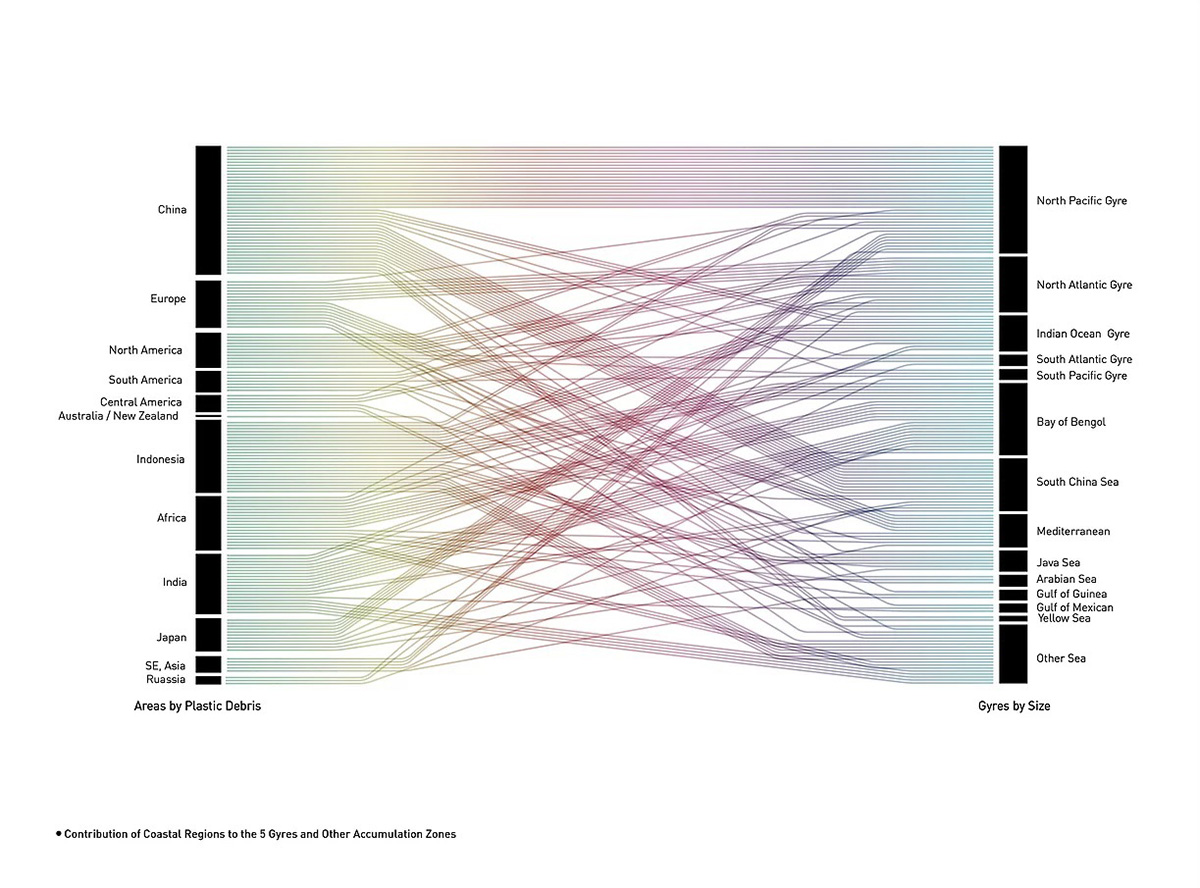


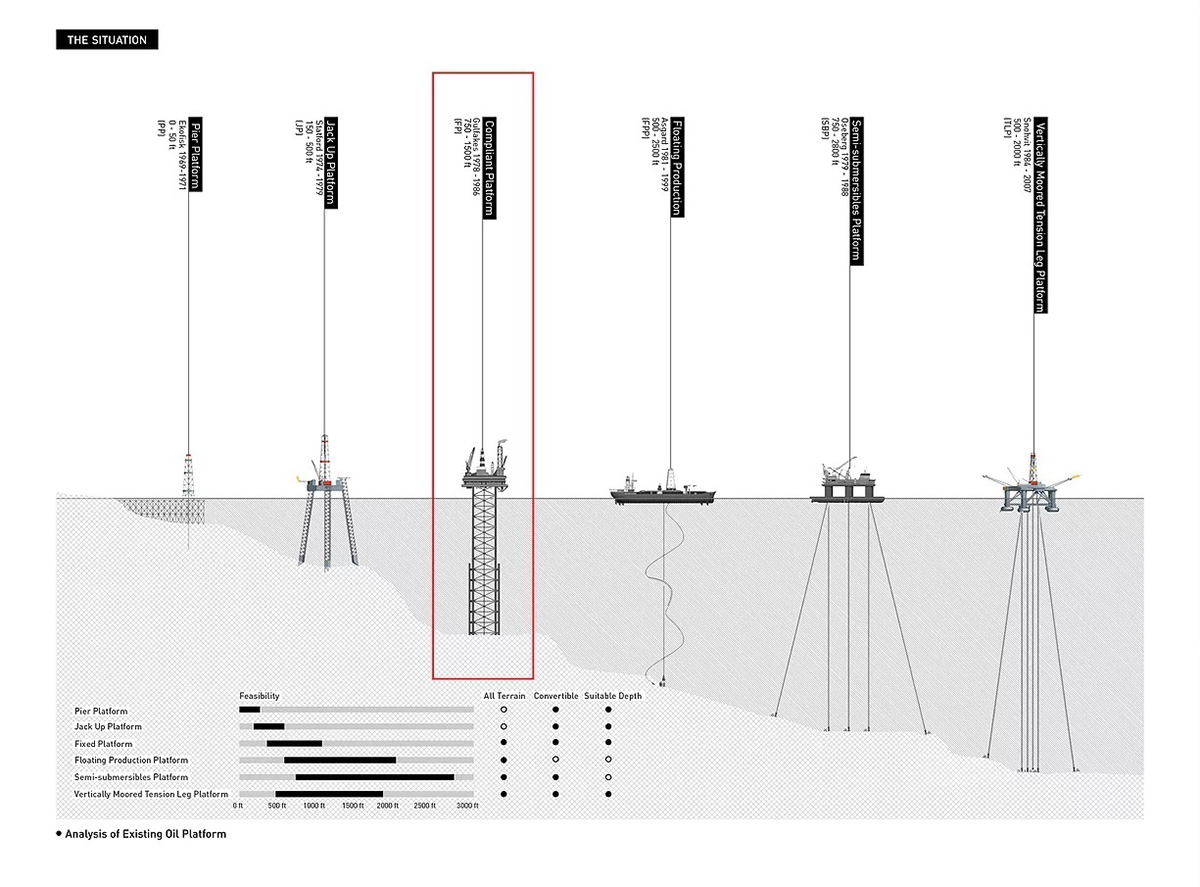
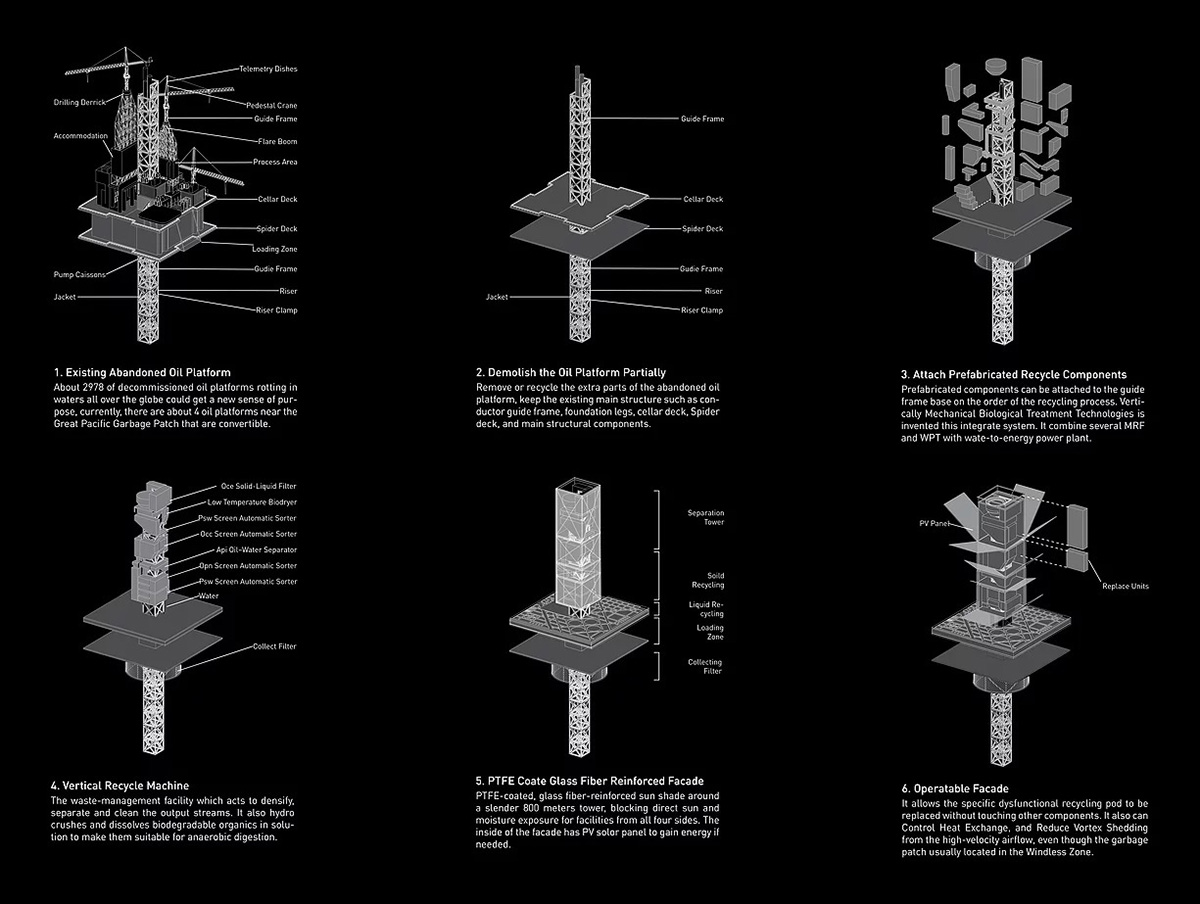
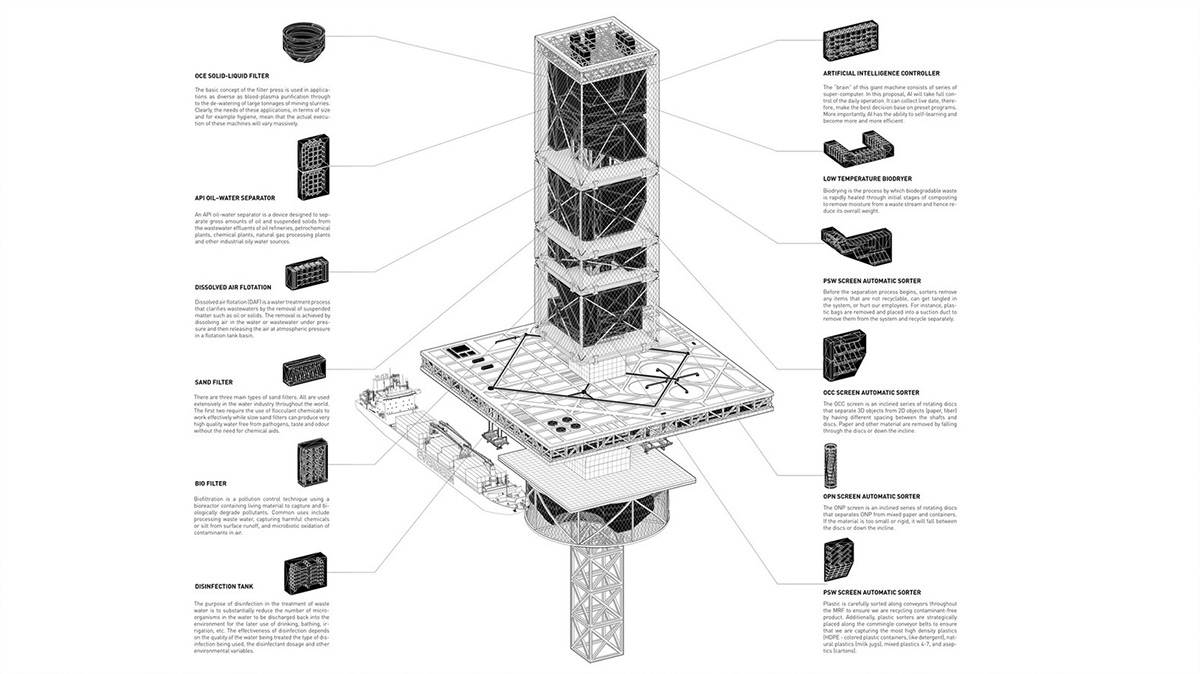

See all eVolo 2019 Skyscraper Competition winners here. Registrations are open to the eVolo 2020 Skyscraper Competition and World Architecture Community's editor-in-chief Berrin Chatzi Chousein will be in the jury for the 2020 edition, alongside Alper Derinboğaz, Founder of Salon Architects, Jürgen H. Mayer, Founder, J. MAYER H. and Partner, Architekten mbB, Manuel Navarro Zornoza, Principal, Latitude Architectural Group, Michael Neumann, Principal, Synn Architects, Ryuichi Sasaki, Founder, Sasaki Architecture,
Lu Yun, Founder, MUDA Architects.
All images courtesy of Honglin Li
> via eVolo
